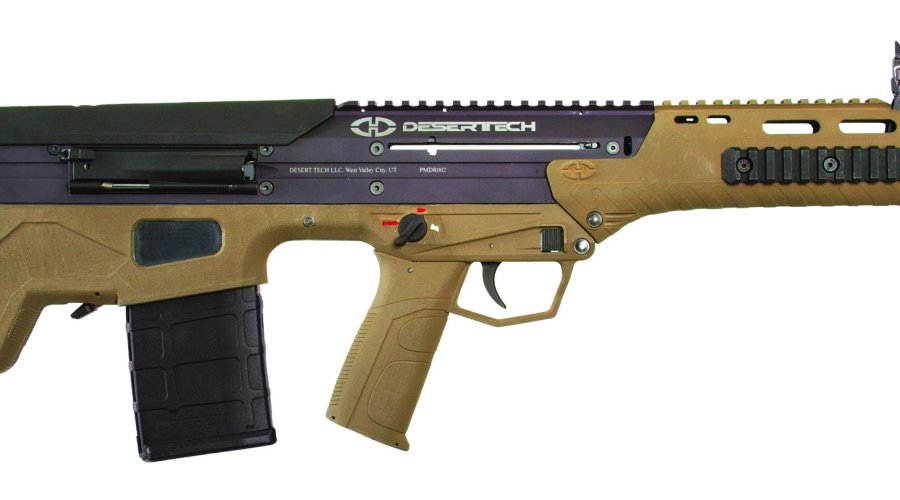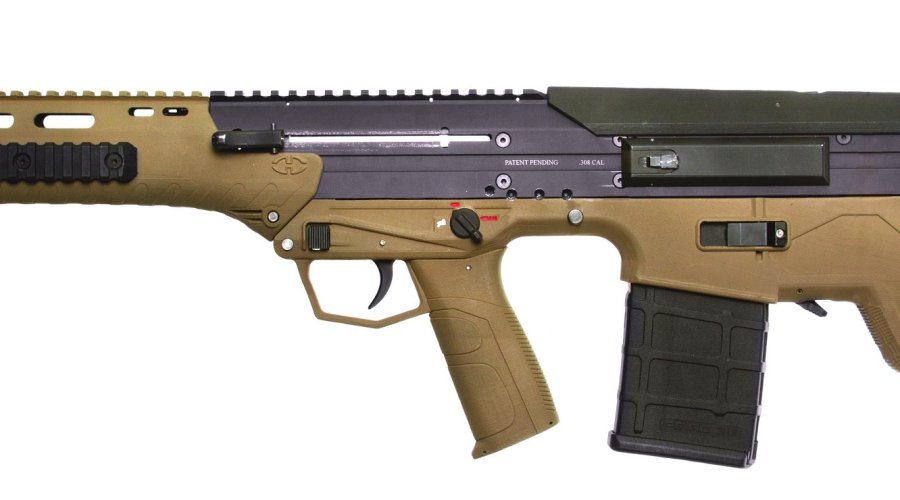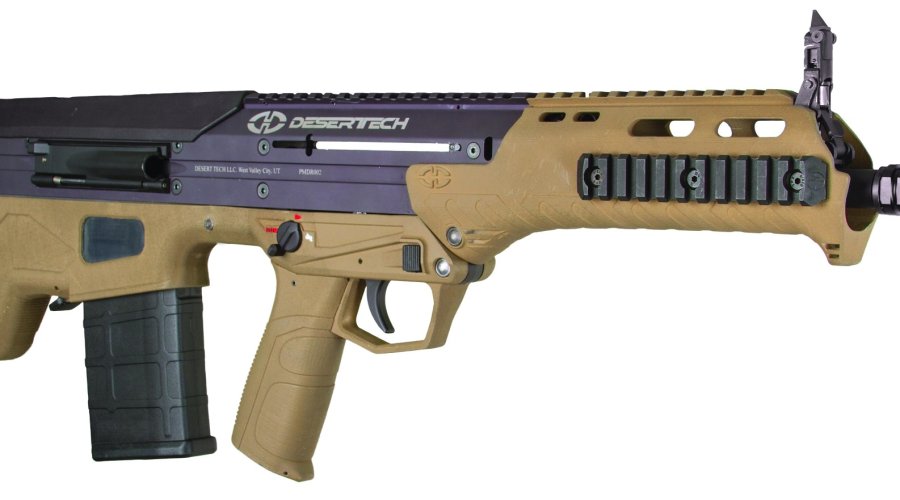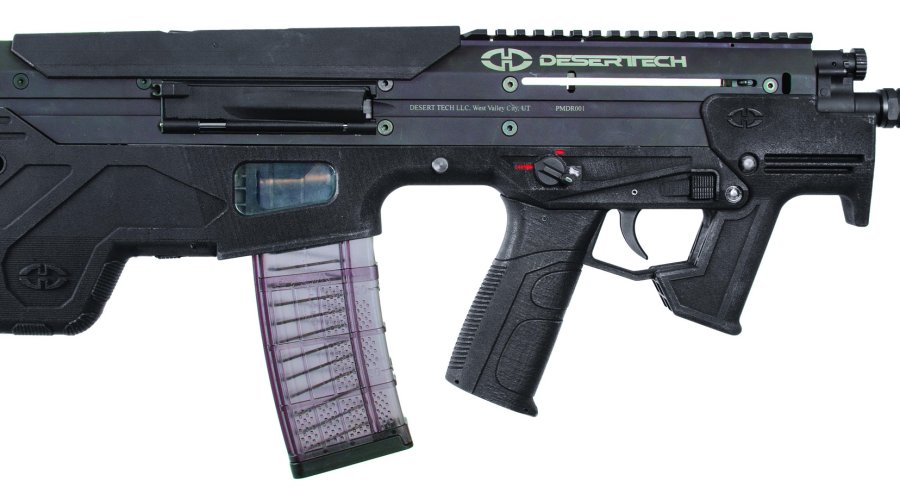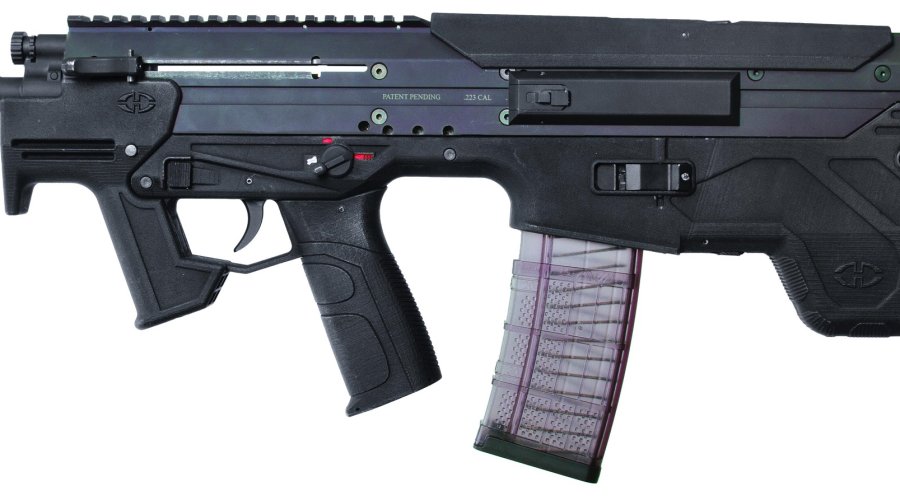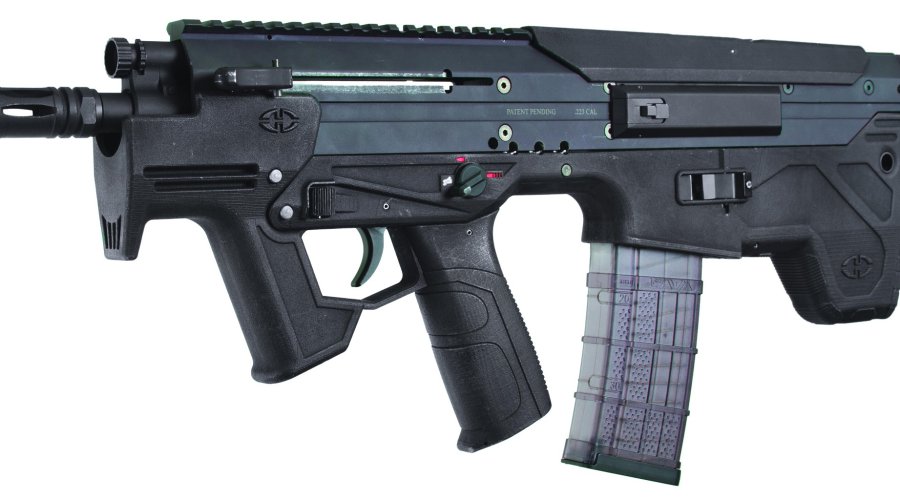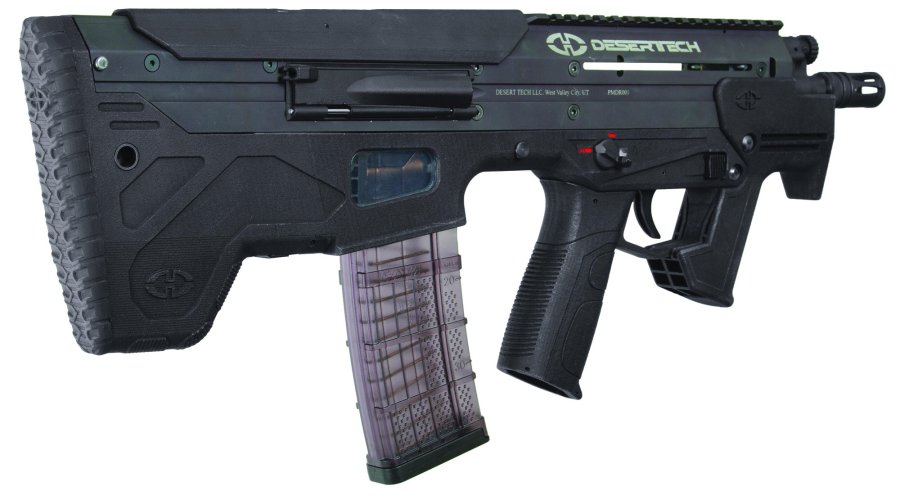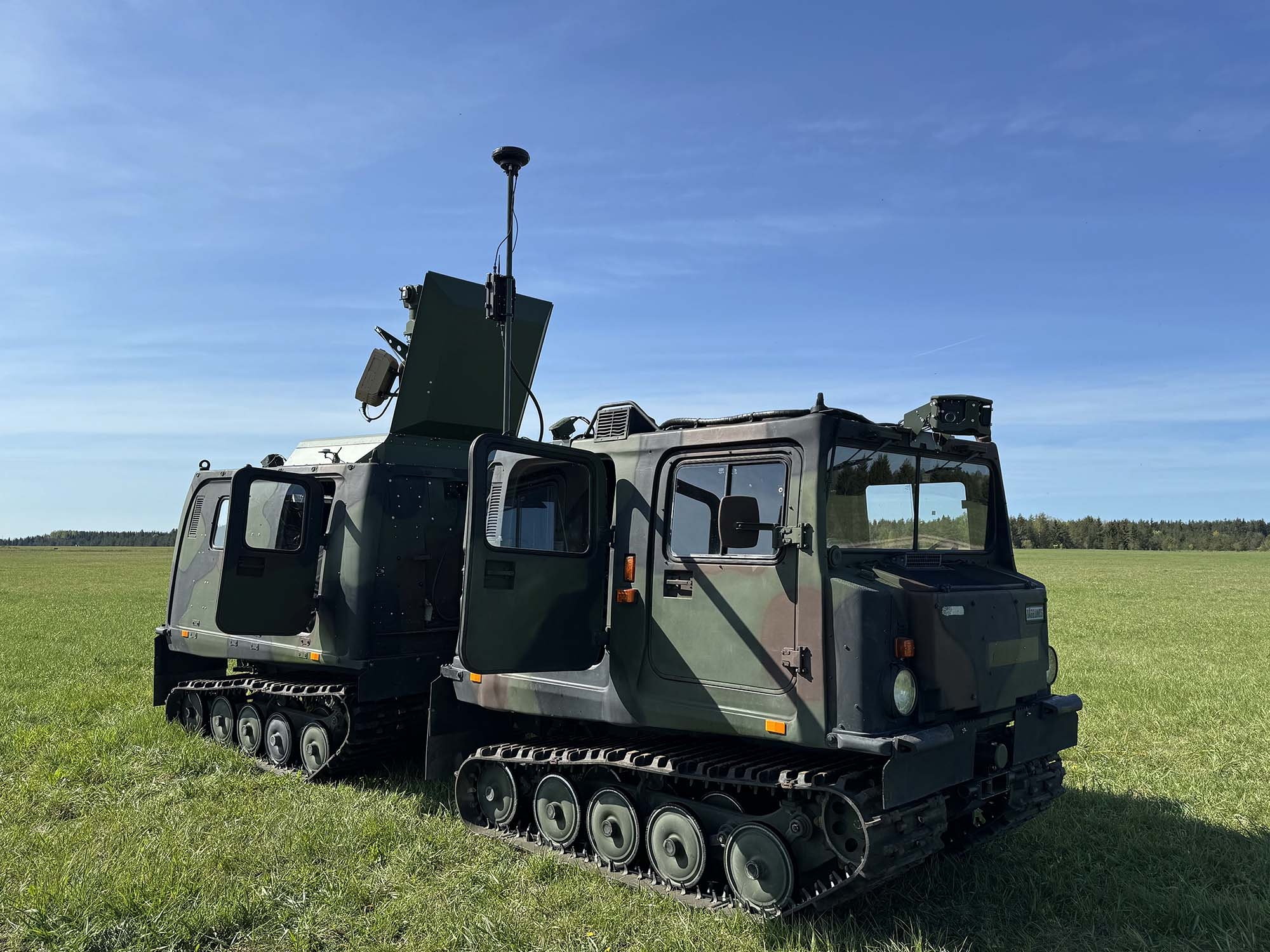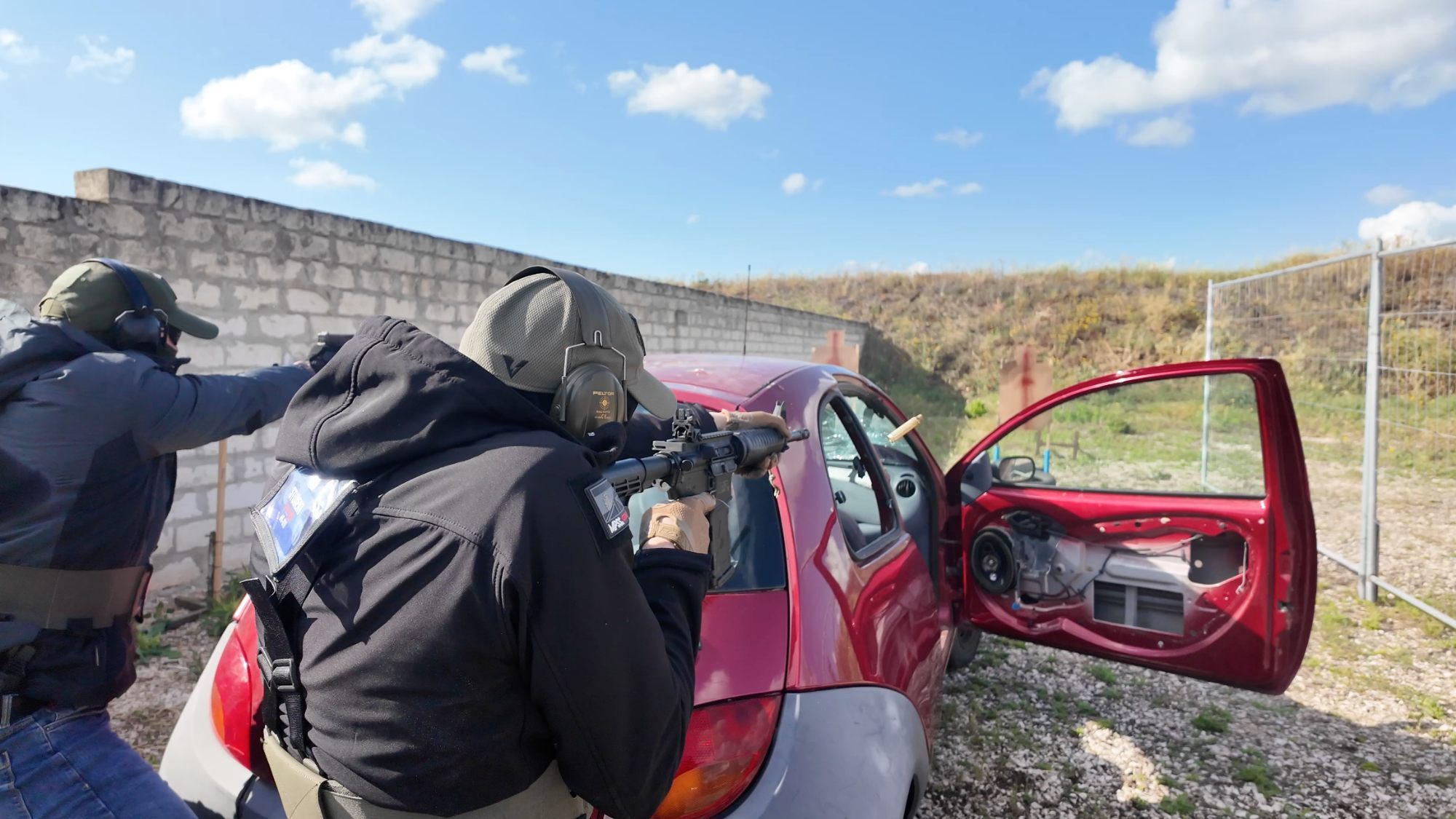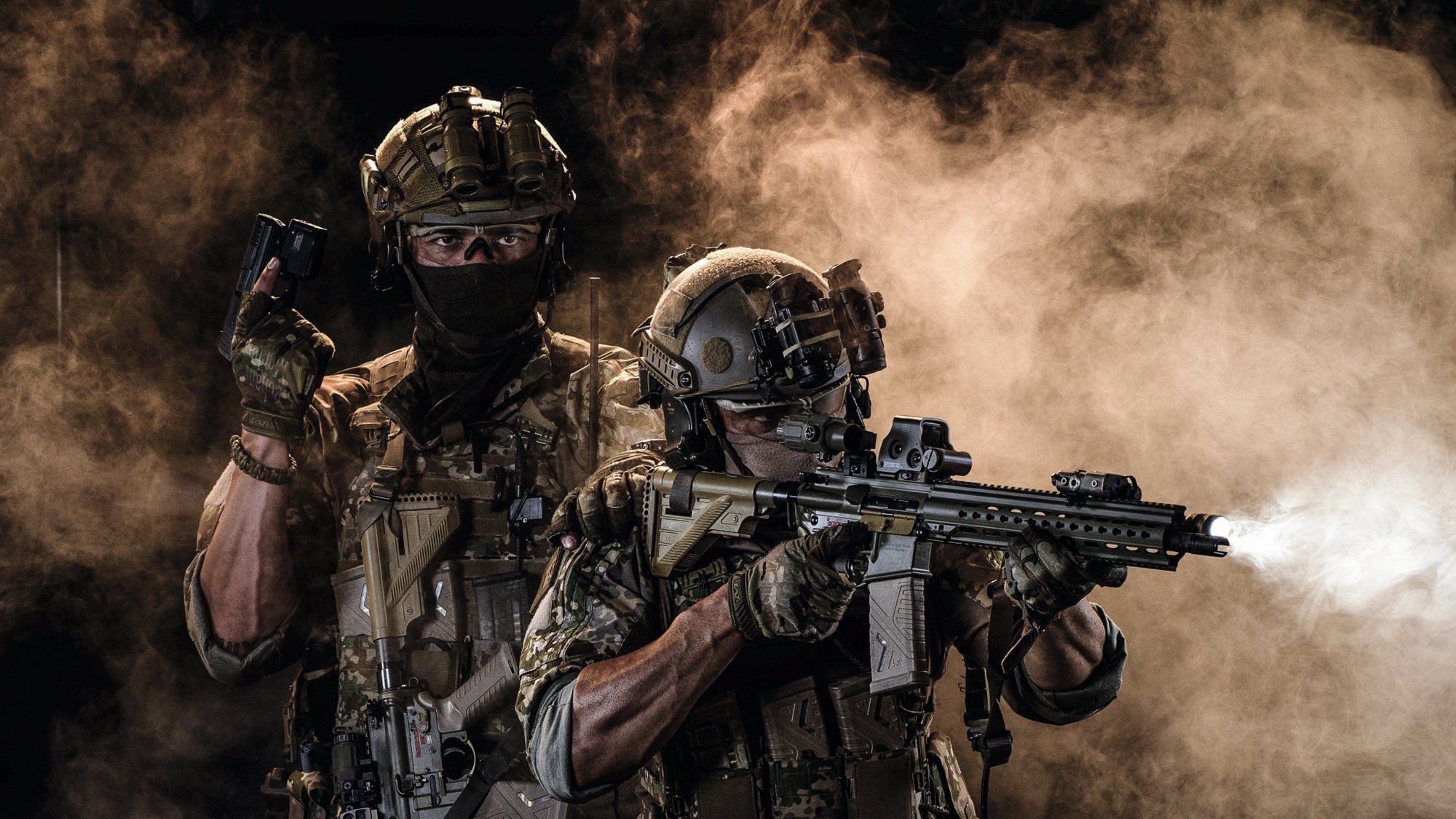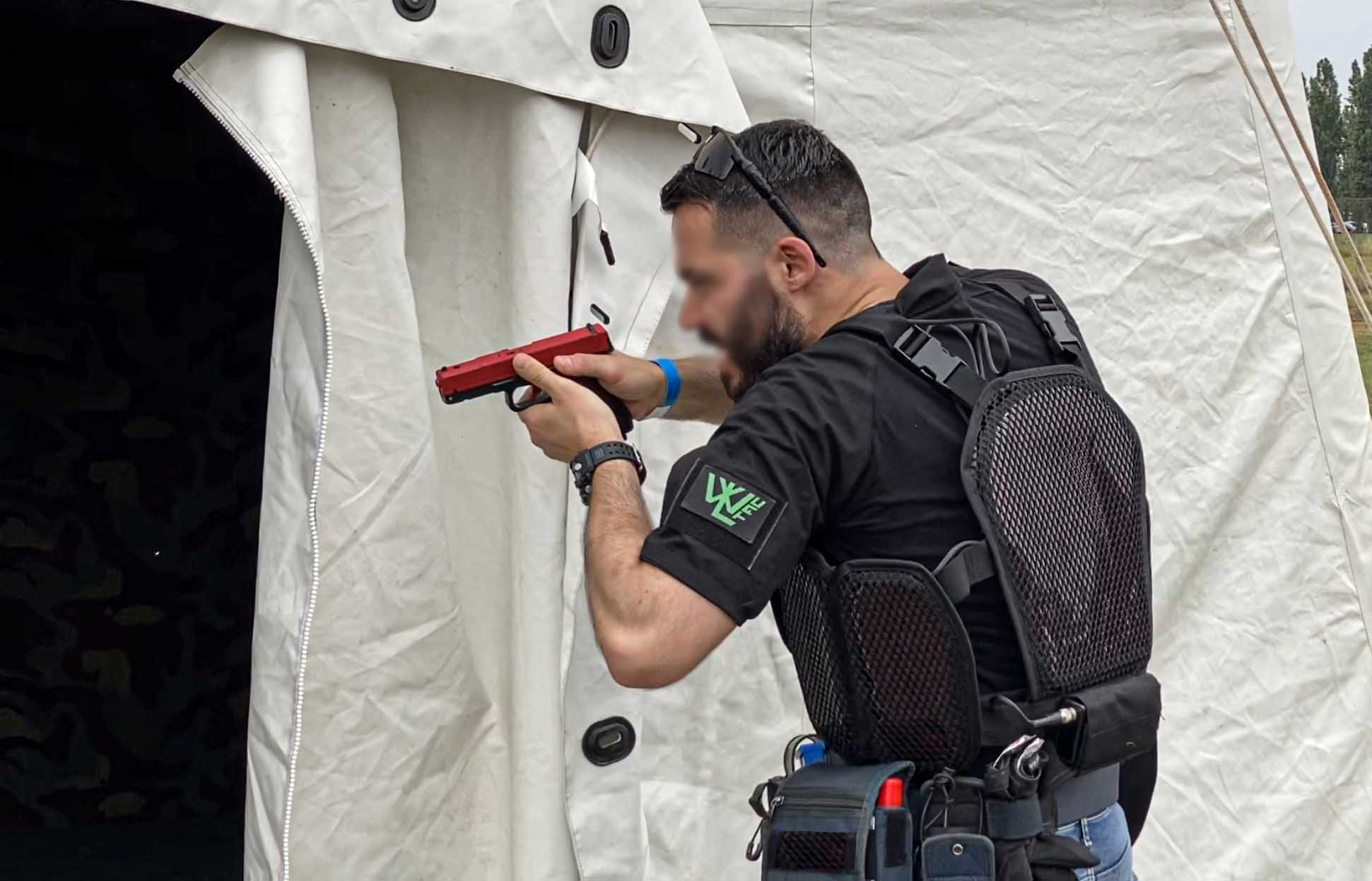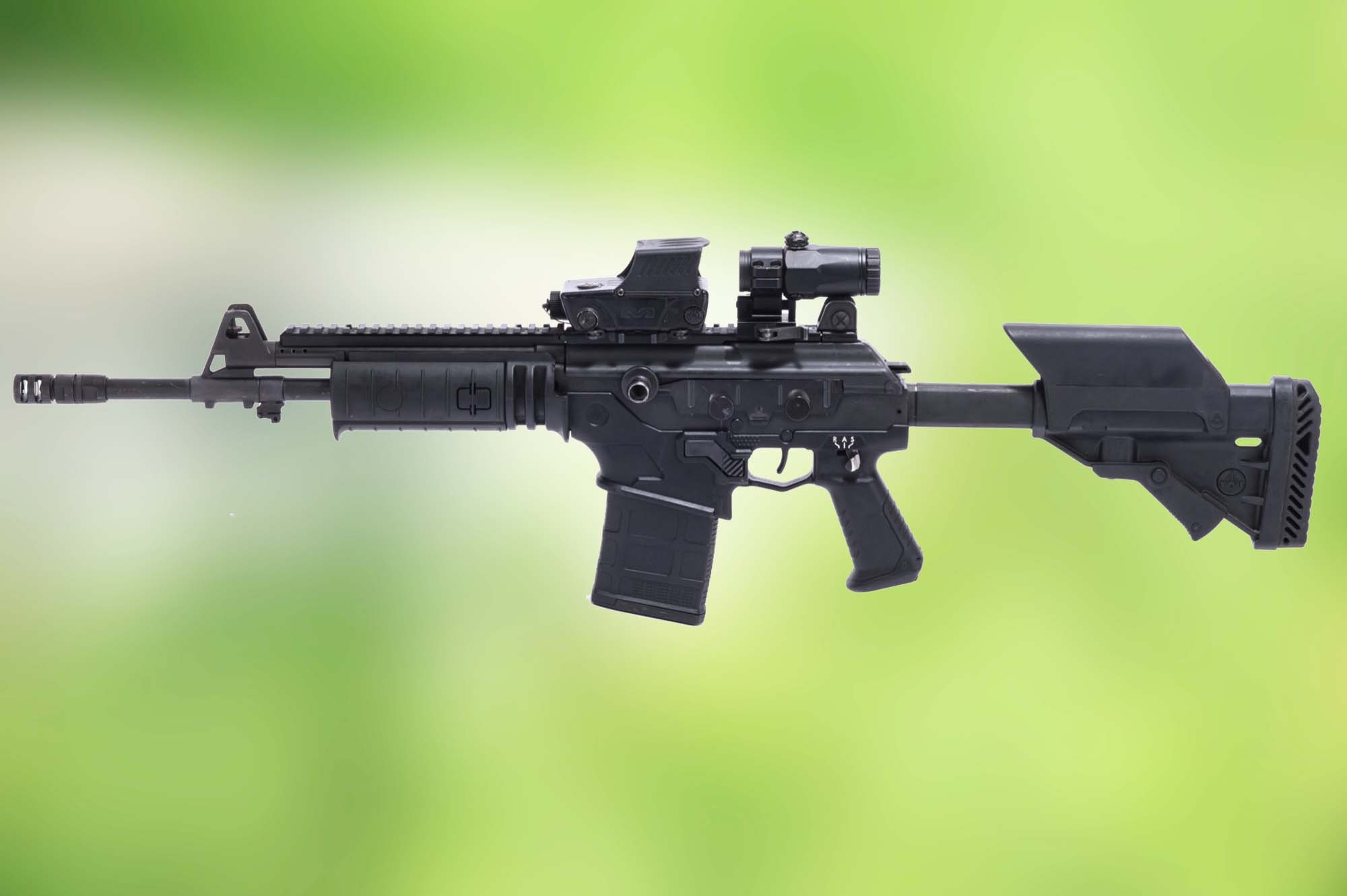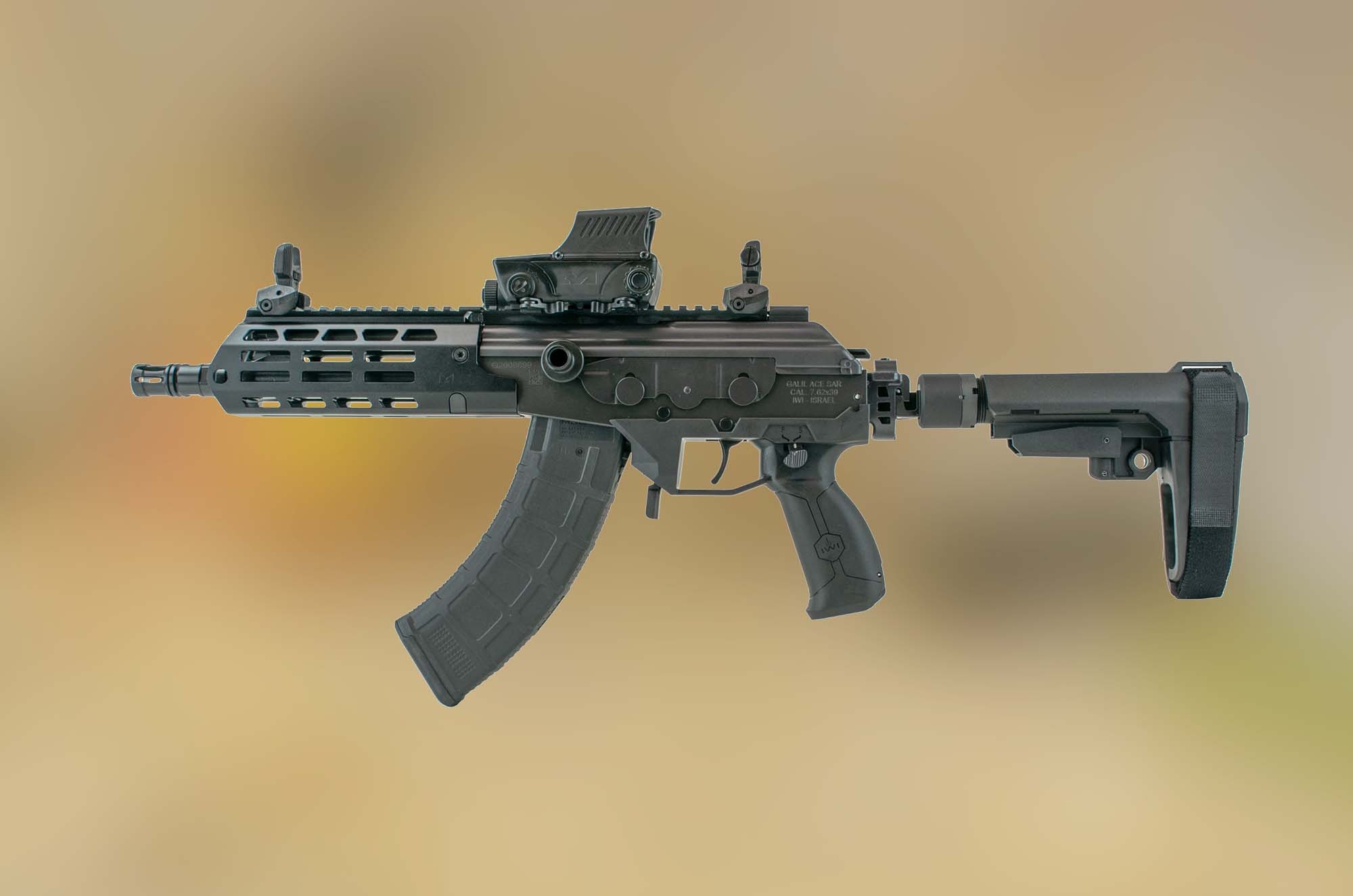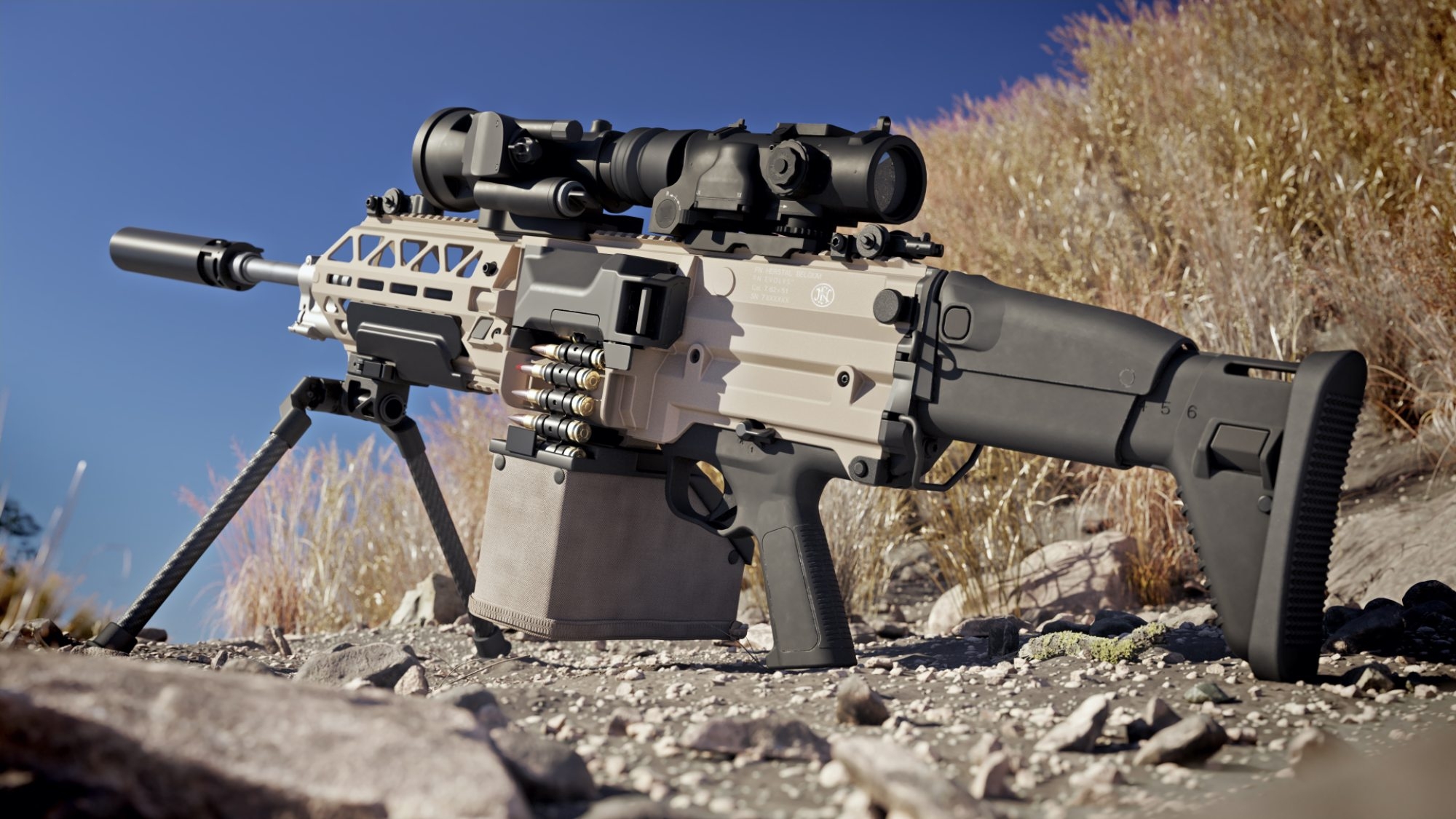Article also available in other languages

Those who followed the gun industry's trade shows more closely this year − particularly the 2014 SHOT Show − will definitely have a clear idea of which is the hottest new product for 2014 (as of today) in the field of both semi-automatic, civilian-grade modern sporting rifles and select-fire, military/police grade service rifles: as a matter of fact, the Micro-Dynamic Rifle, first showcased in January by the Utah-based Desert-Tech LLC. company − formerly known as Desert Tactical Arms − has been one of the most highly appreciated new entries at the Las Vegas' Sands Expo & Convention Center grounds.
Conceived at the end of two and a half years of intense research and development activities, the new platform will be released both as a select-fire/full-automatic weapon system to law enforcement and military customers, and as a semi-automatic rifle series for civilian sales. It's due to enter mass production in eight months or so, but we at ALL4SHOOTERS.COM can provide our readers with an extensive insight of this new design right here and now!
As its own name states, the "Micro-Dynamic Rifle" has been conceived for high-sensitivity tasks: dynamic sports shooting, personal protection, home and property defense in the civilian field; maintainment of public order, counter-terror operations and CQB engagements in the military and law enforcement fields. The challenge was to create a weapon system that would remain effective at merium-to-long ranges while at the same time allowing superior firepower and maneuverability in confined spaces, such as inside a hijacked airplane or bus, in the narrow streets of a city center or even inside a building, or from inside an armored vehicle. That's why Desert-Tech engineers decided to go for the tried-and-true bullpup layout: for over fifty years, bullpup rifles placed the firing chamber, the bolt group and the feeding system behind the grip, allowing to maintain long-distance engagement capabilities in very compact packages.
However, Desert-Tech's "Micro-Dynamic Rifle" is not just a bullpup like (way too) many others. First of all, a redesigned transfer bar system eliminates one of the main drowbacks of bullpups, replacing a typically long and sluggish trigger pull with a smooth, conventional style trigger. Plus, the almost total reinforced polymer chassis construction (available in different colors) maintains overall weight under acceptable levels. Third, and more important, the Desert-Tech "Micro-Dynamic Rifle" has been conceived to be totally, absolutely ambidextrous.
The fire selector − a two-positions switch on the civilian-grade variants, three-positions for MIL/LE − is located on both sides of the lower receiver of the "Micro-Dynamic Rifle", right over the pistol grip; the magazine release push-button is just right ahead. Both are located in the same position as they'd be on an AR-15 derivative rifle or carbine, so that operators who are already trained to the use of the M16 assault rifle, M4 assault carbine and other similar firearms will familiarize with them easier. The cocking handle is located on the upper receiver, and can be reversed; the hold-open release button is instead found right over the magazine well.
The Desert-Tech "Micro-Dynamic Rifle" platform sports a forward-ejection system. It's not a new concept in bullpup designs, as others − like the FN F2000 or the Kel-Tec RFB − already rely on a forward-ejecting mechanism, which in most times however means that spent cases are not ejected outright from the gun but moved to an "ejection tunnel", running besides or over the barrel, and pushed outside by other ejected cases that come right behind, or falling down if the user lowers the gun towards the ground.
This means that in urban operations − when the muzzle is almost kept upright, as operators have to be on constant watch for hostile fire coming from windows − these designs may have not enough force to eject the spent cases, and jams may occur. Another forward ejection system, which relies on the movement of a reciprocating cocking handle to forcefully eject the cases from the rifle, is found on the Russian-made KBP A-91M rifle, but said platform is rarely seen outside Russia and there has been no civilian-grade sporting version so far.
The "Micro-Dynamic Rifle" features an ejection window on the right side only, and a slightly hook-shaped, spring-loaded ejector that normally lays against the left wall of the receiver; the window is covered by a metal sheet dust cover featuring itself a short ejection tube. When the gun is fired, once the empty case is fully extracted from the chamber, the ejector pushes it against the dust cover and within the ejection tube with force; as the bolt slams close again, the spent case is pushed forward, outside of the ejection tube, well away from the user's face, even if it's resting against the dust cover itself. This allows left-handed and right-handed shooters alike to use the "Micro-Dynamic Rifle" from any position, even changing shoulder to better adapt themselves to changing operational situations (e.g. to better exploit a cover position) without any modification. Furthermore, the dust cover can be opened to gain direct, conventional access to the firing chamber, unlike what happens with other forward-ejecting bullpups.
Two variants of the "Micro-Dynamic Rifle" design exist: the full-sized MDR is 26-inches long, sporting a 16-inches barrel, while the compact MDR-C ("Micro-Dynamic Rifle − Compact"), conceived for close protection, employs a 10.5-inches barrel and is 20-inches long overall. Weight for both models, when fully loaded, ranges from 7.12lbs (3.22Kg.) to 7.5lbs (3.4Kg). Both are based upon an indirect gas-impingment system, with a piston-driven rotating bolt and an adjustable gas system that will ensure reliability with any load. The full-sized MDR rifle comes with a folding front sight and no rear sight, while the compact MDR-C has no iron sights at all: both models come with a full-lenght top MIL-STD-1913 "Picatinny" rail for optics or other sighting systems, and the full-sized MDR also sports three Picatinny rails at 3-o'clock, 6-o'clock and 9-o'clock positions on the handguard for tactical accessories.
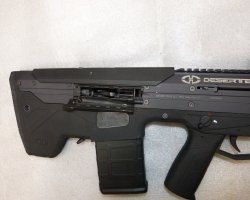
The "Micro-Dynamic Rifle" system has also been conceived as a multicaliber platform: the MDR's native caliber will be 7.62x51mm (.308 Winchester), while the MDR-C will be native in 5.56x45mm (.223 Remington). By simply swapping the barrel and the rotating head of the otherwise universal bolt, both may be converted in other calibers: 7.62x39mm, .300 AAC "Blackout" and 6.8x43mm SPC. Caliber reduction on the full-sized MDR will require the quick snap-on installation of a spacer in the magazine well, but while the MDR may be converted to 5.56x45mm, the MDR-C is under-dimensioned and can only be converted to .300 AAC "Blackout", 6.8mm SPC and 7.62x39mm. Two different magazine types will be used: SR-25/DPMS spec magazines for 7.62x51mm/.308 (this includes MagPul P-MAGs), STANAG 4159 compliant magazines for all other calibers, including 7.62x39mm.
Both civilian-grade and MIL/LE variants (sporting a cyclic rate ranging between 600 and 800 rounds-per-minute, approximately and depending on caliber) will be available on the US market in early 2015, and later during next year for the rest of the world. The yet unconfirmed, target MSRP ranges from 2150.00US$ (MDR-C) to 2400.00US$ (MDR).



